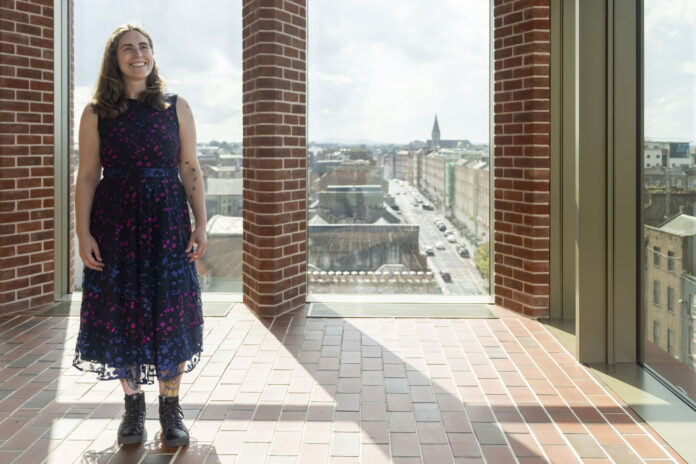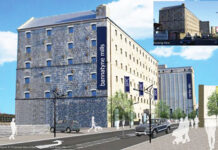
THE OFFICIAL registration of cars and motorbikes began in Ireland in 1903. It followed a system introduced throughout the United Kingdom and Ireland that used two letters to denote where the cars and motorbikes were registered and a series of numbers for each car registered. Simple and effective
The letters used for Limerick City at the time were ‘TI’. County Limerick was ‘IU’. The system was abolished in 1987 when single and double letters denoting boroughs were introduced. That’s when Limerick City plates got an ‘L’ denotation and Limerick County became ‘LK’.
Looking back on that first set of cars registered in Limerick City, we can see the names of some of the most influential individuals in the Treaty at the time – especially those who owned monster stores, large factories, or big estates, who invariably took up the first few numbers.
Five vehicles were registered on the very first day the new system was put in place on January 1, 1904.
The TI 1 registration went to James Pery Goodbody for his four seater, nine horse power, white Renault car. It was originally registered on January 1 as a private vehicle, but on May 20 of that year it was changed to use as a trade vehicle.
The Goodbody family, originally from Clara, County Offaly, were Quakers and prominent figures in the Irish milling industry. In 1865, they established a successful Jute Mill in Clara.
Back in Limerick, James Bannatyne, who was seeking investors for his milling business, turned to the Goodbodys, impressed by their success. Despite initial difficulty raising funds, the Goodbodys partnered with Bannatyne, eventually gaining complete control of his business and acquiring Russell’s milling concerns by 1898.
Their expansion into Limerick thrived, turning over substantial profits during World War I. However, economic difficulties in the Irish Free State by 1925 led to struggles. By 1929, facing bankruptcy, they negotiated with Ranks Ltd, who acquired their Limerick mills. Some Goodbody family members continued to work for Ranks after the takeover.
The TI 2 and TI 3 registrations were also owned by members of the Goodbody family. James Ellis Goodbody of Thornville and Norman Goodbody of Westbourne, who privately owned a motor tricycle and motorbike. The latter was a provisional registration, presumably waiting for his motorbike to arrive.
The TI 2 registered motor tricycle was a dark green ‘Century Tandem’ – a peculiarly shaped vehicle with two wheels at the front and one at the rear. A passenger seat was mounted atop the two front wheels, while the machine was controlled by a driver seated above the rear wheel. With no restraints, the passenger was in constant risk of being thrown forward out of the contraption.
In 1907, the Werner & Co built motorbike with registration TI 3 became the property of Frederick Storey of Catherine Place. Werner produced motorcycles from 1897 to 1908. In 1901, they built and patented the cradle frame engine location that most motorbikes use today.
The TI 4 registration went to another large factory in the city. This time to Cleeve’s Condensed Milk Factory. Interestingly, this green car was registered for private use, even though the titles were made out to the factory itself.
In 1909, the Goodbodys sold their white Renault to a Mrs Rose of 4 Hartstonge Street, but instead of the car retaining its TI 1 registration by paying a £1 fee and the Renault became TI 91. The prestigious TI 1 registration stayed with the Goodbody family and became the official car for their business of James Bannatyne & Sons Ltd.
The TI 1 registration eventually left the Goodbody family, and also stopped being used for a car. On November 15, 1916, Rev Walter Maristow Watkins Pitchford of The Rectory, Lamport, used this first number for his three and a half horsepower ‘BSA’ motorbike.
Limerick was a long way from Lamport, a village in Northamptonshire. While serving as the rector of this village, Watkins Pitchford had a son, born in 1905, who was also given an elaborate name –Denys James Watkins-Pitchford.
Denys was a British naturalist, an illustrator, art teacher, and a children’s author under the pseudonym ‘BB’. He won the 1942 Carnegie Medal for British children’s books. It is possible that this famous author, who was home schooled, took a spin on his father’s Limerick-registered motorbike.
The TI 5 registered vehicle went into the New Barracks (Sarsfield Barracks today). It was registered by Captain Thomas Winter Sheppard of the King’s Regiment. Sheppard had served in the Second Boer War before arriving in Limerick. He only stayed in the city for a short period, leaving to marry in Sussex in April 1905.
It is not known where Sheppard sold his six horse power French-made De Dion, but on February 20, 1905, it had been re-registered. The new owner was an Arthur C Lewin, with an address at Blackdowns Barracks, Hampshire. It is probable that this was Brigadier General Arthur C Lewin who was also involved in the Second Boer War and was in Belfast in 1903 and The Curragh in 1907.
Colonel Arthur C Lewin was most well-known for disappearing with his wife while returning from placing second in 1937 King’s Cup, an air race from London to Cape Town. The couple got into difficulty in the air and spent 10 days on a tiny, mosquito-infested island in the Nile swamp. Luckily they were spotted and rescued by the RAF.
Interestingly, the first person to fly solo from South Africa to England was Newcastle West woman Lady Mary Heath.








